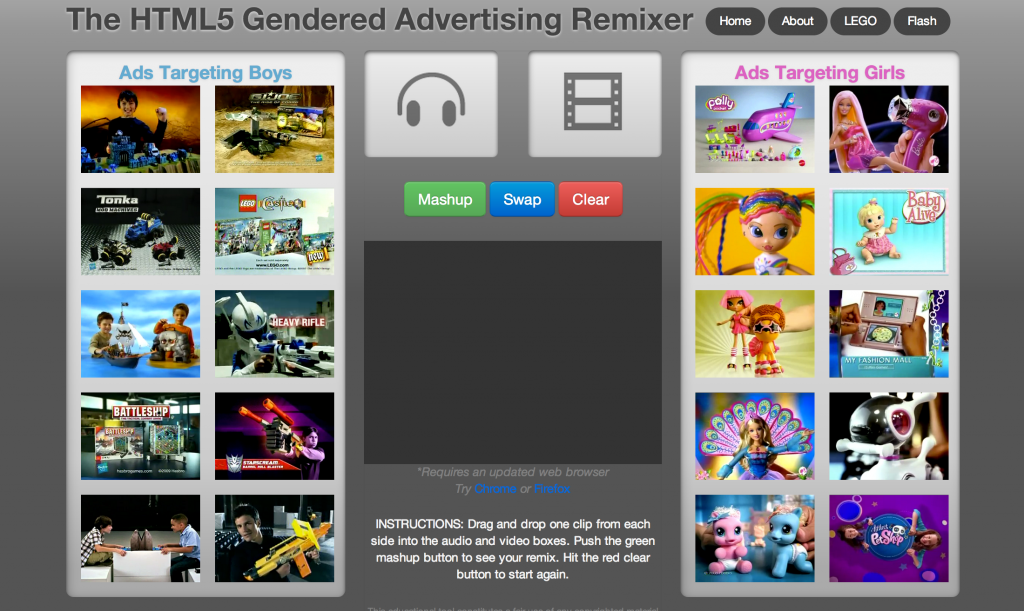Objectives:
- Become acquainted with copyright as a historic, cultural and economic paradigm and its value and pertinence to creative works.
- Explore the changing nature of copyright in the context of “Remix Culture” and the “Fifth World”
- Examine their own and others values and paradigms of ownership and authorship of cultural media.
- Evaluate the meanings of real and fake and examine their intersection with personal and cultural identity and authenticity.
Original Post:
In Lawrence Lessig’s Ted talk “Laws that choke creativity”, he mentions that using of computer technology is a kind of read-write culture. That is, “It’s a culture where people participate in the creation and the re-creation of their culture” (Lessig). And then, he gives some examples such as the Internet and remixing music. That made me think about the music industries in the US and China are so different. The US music industry has a specific and systematical law of music copyright, but in China, the music copyright is vague. Couple years ago, people could download any music for free from the Internet. Recently, the big internet groups are willing to pay license music for their platforms because Chinese consumers are increasingly listening to music via a small number of streaming services controlled by the big internet groups such as Tencent, Alibaba and China Mobile. Compared with the United Sates, the next challenge for Chinese music industry is how to convince consumers to pay for the music.
Reflection:
After reading Lessig’s article Remix again, I think digital technology acts as a controversial role in remixing culture. In Lessig’s article, he mentions, “Digital technologies changed the technical capacity. In its first version, digital technologies gave users almost unlimited technical capacity to mix and remix RO culture” (98). We can download any pictures that we need for personal use online. In my first class of Photoshop Workshop, we learnt how to remove the label of a product and change its background in a new way. That’s the first step to learn how to “remix” things. If you want to remix things, you should remove something original such as name, title and date first. This is technology skill that I have to learn as a digital designer because my job needs remixing skill. I feel guilty sometime because I’m not creating my own stuff, and I’m making copies. As Lessig says, “The law regulates ‘reproduction’ or ‘copies’. But every time you use a creative work in a digital context, the technology is making a copy” (98). Last summer, I worked for a talk show. What I did on the first day was to download news pictures and remove logos and texts in the picture. And then I needed to use them created a short slide show for new episode of the talk show. In the fact, this is a normal way to recreate things in media industry.
Future:
“Remixing Culture” can be controversial in some ways. It is a good way to recreate and reproduce existing things. Also, the effects of remixing might be interesting. Here is a website called Gender Remixer. We can put these two advertisements in two box chart and click the “Mashup” button, then the screen will show a new advertisement which has one’s image and other’s sound. The result is interesting because we can directly feel the big difference between girls’ toy ads and boy’s toy ads. The girls’ dialogue is very sweet and relaxing, for example, they talk about cooking dinner and cleaning kitchen. However, the boy’s ads focus more on braveness and heroism. They are always busy with stopping wars and saving human beings.
Reference:
Lessig,L. (2008). Comparing Cultures. Remix: Making Art and Commerce Thrive in the Hybrid Economy (pp. 84-116). New York: Penguin Press HC, The.
Laws that Choke Creativity, http://www.ted.com/talks/larry_lessig_says_the_law_is_strangling_creativity?language=en
Table of Contents:
Artifact 4: The Art of Personal Adornment
Artifact 5: The Anesthetic of Horror
Artifact 6: Creative Spirituality

Very good and interesting information provided in this post. Thank you for sharing. Really good content
123bet